Positive rake carbide inserts are a vital component in the machining and metalworking industries. They are designed to enhance cutting efficiency, extend tool life, and improve the overall quality of finished products. In this comprehensive guide, we will delve into the specifics of positive rake carbide inserts, including their types, applications, material properties, composition, and how to select the right ones for your needs. We will also compare various models and provide insights on suppliers and pricing. Let’s dive in!
Overview of Positive Rake Carbide Inserts
Positive rake carbide inserts are cutting tools used in various machining operations such as turning, milling, and drilling. These inserts are known for their ability to reduce cutting forces, improve surface finish, and extend the life of the tool. They are particularly effective in machining hard materials and alloys.
Key Details:
- Improved Cutting Efficiency: Positive rake inserts have an angled cutting edge that allows for smoother cutting action and reduced resistance.
- Extended Tool Life: By minimizing cutting forces and heat generation, these inserts last longer and perform better.
- Enhanced Surface Finish: The design of positive rake inserts ensures a cleaner cut, leading to superior surface finishes on machined parts.
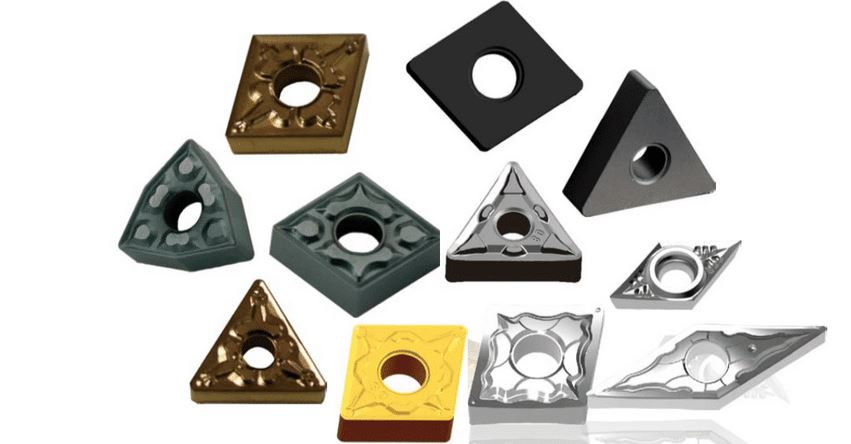
Types of Positive Rake Carbide Inserts
To help you choose the right positive rake carbide insert, here’s a detailed table summarizing the various types available:
| Type | Description | Best For |
|---|---|---|
| TPG | Triangular positive ground inserts with three cutting edges. | General purpose turning and facing. |
| APKT | Advanced positive rake inserts with complex geometries for high-performance milling. | High-speed milling. |
| CCMT | Positive rake inserts with 80-degree diamond shape and four cutting edges. | Light to medium turning. |
| DCMT | 55-degree diamond-shaped inserts with positive rake angle. | Finishing operations. |
| VBMT | Positive rake inserts with a 35-degree rhombic shape for precision cutting. | Finishing and profiling. |
| SCMT | Square-shaped inserts with positive rake angle, offering four cutting edges. | Roughing and heavy-duty turning. |
| WNMG | Trigon-shaped inserts with a high positive rake angle for smooth cutting. | Versatile turning operations. |
| CNMG | Positive rake inserts with a 80-degree parallelogram shape, designed for both roughing and finishing. | General machining. |
| RPMT | Round positive rake inserts for high feed rate milling applications. | Face milling. |
| SNMG | Square-shaped inserts with a larger nose radius, providing high strength and durability in heavy cuts. | Heavy roughing. |
Applications of Positive Rake Carbide Inserts
Positive rake carbide inserts are used in a wide range of applications across different industries. Here is a table to summarize their common applications:
| Application | Description |
|---|---|
| Automotive | Machining engine components, transmission parts, and other precision automotive parts. |
| Aerospace | Manufacturing turbine blades, structural components, and precision fittings. |
| Medical | Producing surgical instruments, orthopedic implants, and dental components. |
| Oil & Gas | Machining parts for drilling equipment, valves, and fittings used in the oil and gas industry. |
| Mold & Die | Creating molds, dies, and precision tooling for various manufacturing processes. |
| General Engineering | General machining tasks in workshops and manufacturing facilities. |
| Electronics | Fabricating components for electronic devices, including housings and connectors. |
| Energy | Producing parts for renewable energy equipment, such as wind turbines and solar panel frames. |
| Heavy Equipment | Machining large components for construction and agricultural machinery. |
| Precision Instruments | Creating high-precision components for measuring and analytical instruments. |
Material Properties of Positive Rake Carbide Inserts
Understanding the material properties of positive rake carbide inserts is crucial for selecting the right insert for your application. The table below outlines these properties:
| Property | Description |
|---|---|
| Hardness | High hardness ensures wear resistance and durability during cutting operations. |
| Toughness | Provides the ability to withstand sudden impacts and high-pressure cutting conditions. |
| Thermal Stability | Maintains integrity and performance at elevated temperatures. |
| Wear Resistance | Resistance to abrasion and erosion during machining, extending tool life. |
| Chemical Stability | Resistance to chemical reactions with work materials, reducing wear and corrosion. |
| Fracture Toughness | Ability to resist crack propagation, enhancing durability and reliability. |

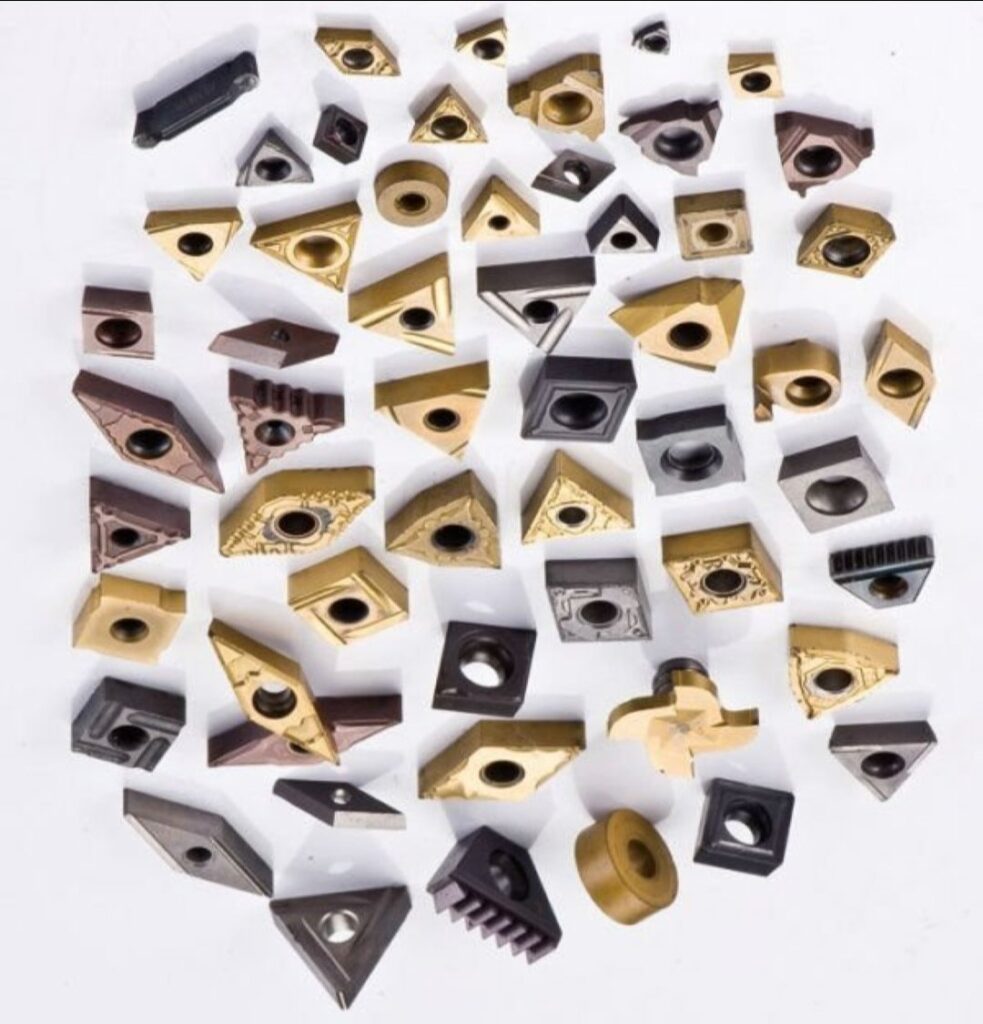
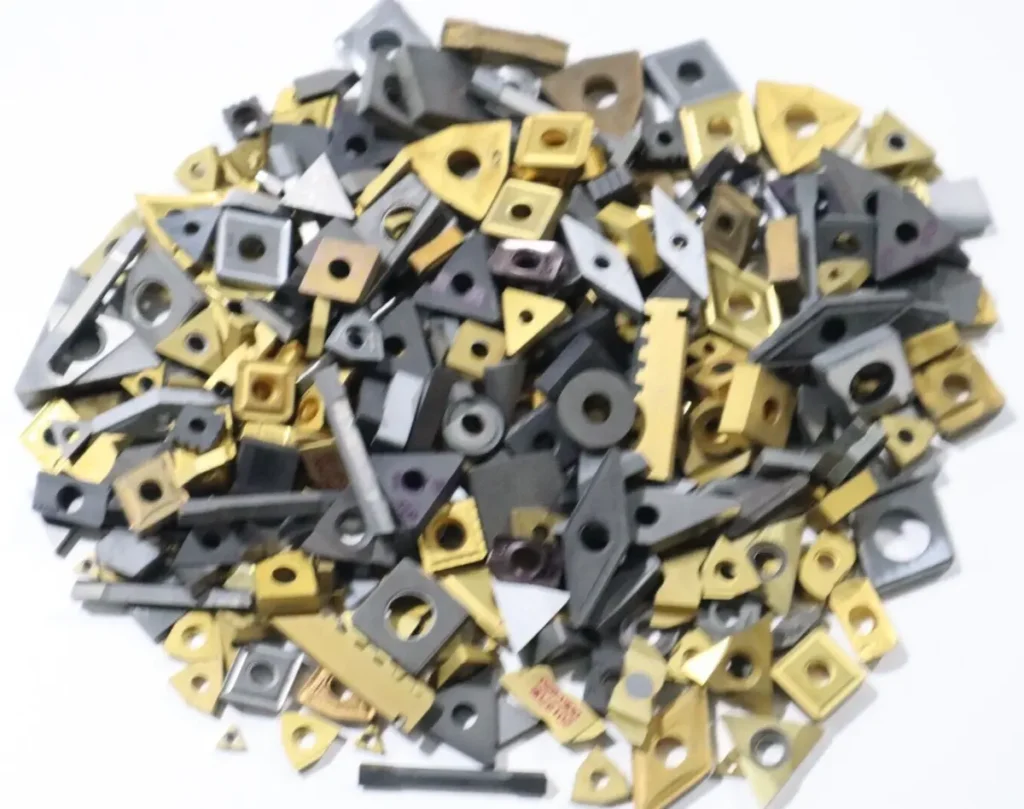
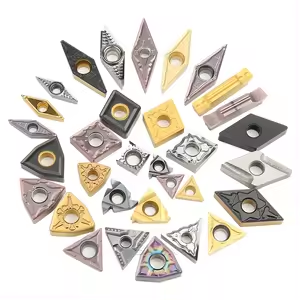
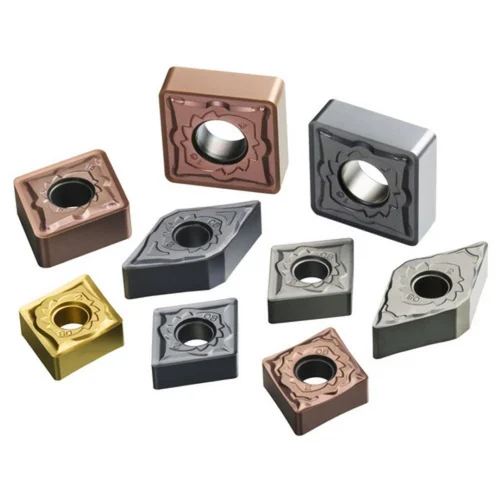

Composition and Characteristics of Positive Rake Carbide Inserts
The composition of positive rake carbide inserts is crucial for their performance. Here’s a table detailing the common compositions and their characteristics:
| Composition | Description | Characteristics |
|---|---|---|
| Tungsten Carbide | Primary material, known for its hardness and wear resistance. | High hardness, wear resistance, moderate toughness. |
| Cobalt | Binder material that holds the tungsten carbide particles together. | Provides toughness and thermal stability. |
| Titanium Carbide | Added to enhance wear resistance and reduce chemical reactivity. | Increased wear resistance, improved performance in high-speed machining. |
| Tantalum Carbide | Enhances hardness and high-temperature performance. | High hardness, thermal stability. |
| Niobium Carbide | Improves toughness and fracture resistance. | Enhanced toughness, resistance to thermal shock. |
| Chromium Carbide | Increases oxidation resistance and overall tool life. | Improved wear resistance, reduced oxidation at high temperatures. |
Hardness, Strength, and Wear Resistance
Positive rake carbide inserts are designed to offer an optimal balance between hardness, strength, and wear resistance. Here’s a table highlighting these properties:
| Property | Description |
|---|---|
| Hardness | Measured in Rockwell Hardness (HRA), typically ranging from 85 to 94 HRA. |
| Strength | Compressive strength ranges from 500 to 700 kN/mm². |
| Wear Resistance | Varies with composition, but generally offers superior resistance to abrasion and erosion. |
Specifications, Sizes, and Shapes
Positive rake carbide inserts come in various sizes and shapes, tailored for different machining tasks. The table below provides an overview of these specifications:
| Shape | Size Range | Standards |
|---|---|---|
| Triangular (TPG) | Sizes range from 1/4″ to 1″ per side. | ANSI, ISO |
| Square (SCMT) | Sizes range from 3/8″ to 1″ per side. | ANSI, ISO |
| Diamond (DCMT) | Sizes range from 1/4″ to 3/4″ length. | ANSI, ISO |
| Round (RPMT) | Sizes range from 1/4″ to 1″ diameter. | ANSI, ISO |
| Rhombic (VBMT) | Sizes range from 3/8″ to 3/4″ length. | ANSI, ISO |
| Trigon (WNMG) | Sizes range from 3/8″ to 1″ per side. | ANSI, ISO |
Suppliers and Pricing Details
Choosing the right supplier can impact the quality and cost of your positive rake carbide inserts. Here’s a table summarizing some reputable suppliers and their pricing details:
| Supplier | Country | Price Range | Website |
|---|---|---|---|
| Kennametal | USA | $10 – $50 per insert, depending on size and grade. | kennametal.com |
| Sandvik Coromant | Sweden | $12 – $55 per insert, depending on size and grade. | sandvik.coromant.com |
| ISCAR | Israel | $15 – $60 per insert, depending on size and grade. | iscar.com |
| Mitsubishi | Japan | $12 – $50 per insert, depending on size and grade. | mitsubishicarbide.com |
| Seco Tools | Sweden | $10 – $45 per insert, depending on size and grade. | secotools.com |
| Kyocera | Japan | $8 – $40 per insert, depending on size and grade. | [kyocera.com](https://www.kyocera.com) |
| Walter Tools | Germany | $11 – $48 per insert, depending on size and grade. | walter-tools.com |
| Sumitomo | Japan | $10 – $50 per insert, depending on size and grade. | sumitool.com |
| Tungaloy | Japan | $12 – $55 per insert, depending on size and grade. | tungaloy.com |
| TaeguTec | South Korea | $9 – $45 per insert, depending on size and grade. | taegutec.com |
Selecting the Right Positive Rake Carbide Inserts
Choosing the right positive rake carbide insert can be daunting, given the variety available. Here’s a table to guide you through the selection process:
| Criteria | Considerations | Recommended Insert |
|---|---|---|
| Material | The type of material being machined (steel, aluminum, titanium, etc.). | TPG for steel, APKT for aluminum, VBMT for titanium. |
| Machining Type | Whether the operation is roughing, finishing, or general purpose. | SCMT for roughing, DCMT for finishing, CNMG for general purpose. |
| Machine Capability | The power and stability of the machining equipment. | WNMG for stable machines, RPMT for high-feed milling. |
| Surface Finish | The desired quality of the surface finish. | VBMT for high precision, WNMG for versatile applications. |
| Cutting Speed | The speed at which the cutting operation is performed. | APKT for high-speed milling, TPG for general turning. |
| Tool Life | The expected lifespan of the insert under specific conditions. | SCMT for extended tool life, CNMG for balanced performance. |
Advantages and Limitations of Positive Rake Carbide Inserts
When selecting positive rake carbide inserts, it’s important to weigh their advantages against their limitations. Here’s a comparison:
| Advantages | Limitations |
|---|---|
| Reduced Cutting Forces: Positive rake inserts require less force, leading to smoother cutting operations. | Cost: Generally higher cost compared to negative rake inserts. |
| Improved Surface Finish: The design allows for cleaner cuts and better surface quality. | Fragility: Can be more prone to chipping under heavy loads or improper use. |
| Extended Tool Life: Lower cutting forces and heat generation extend the life of the tool. | Application Specific: May not be suitable for all machining operations. |
| Versatility: Suitable for a wide range of materials and machining conditions. | Setup Sensitivity: Requires precise setup and alignment for optimal performance. |
Positive Rake Carbide Inserts: Models and Descriptions
Here are ten specific models of positive rake carbide inserts, each with detailed descriptions:
- Kennametal TPG322 Grade KC5010
- Description: Triangular insert with sharp cutting edges, ideal for machining steel.
- Best For: General turning and facing.
- Features: High wear resistance, excellent surface finish.
- Sandvik Coromant DCMT 11T304-UM 4315
- Description: Diamond-shaped insert with a versatile grade for finishing operations.
- Best For: Finishing and semi-finishing of steels and stainless steels.
- Features: Excellent edge security, reduced crater wear.
- ISCAR APKT 160408-PDR IC908
- Description: Advanced milling insert with positive rake and unique chip breakers.
- Best For: High-speed milling of aluminum and non-ferrous metals.
- Features: High thermal stability, superior chip control.
- Mitsubishi VBMT 160408-MV VP15TF
- Description: Rhombic insert with a positive rake for precision cutting.
- Best For: Finishing of difficult-to-cut materials like titanium alloys.
- Features: Excellent surface finish, high toughness.
- Seco Tools WNMG 080408-M3 TP1501
- Description: Trigon insert with high positive rake for versatile applications.
- Best For: General purpose turning and facing.
- Features: Long tool life, excellent chip formation.
- Kyocera CNMG 120408-MF CA5525
- Description: Parallelogram-shaped insert with balanced performance.
- Best For: Machining cast iron and steel.
- Features: High toughness, good wear resistance.
- Walter Tools RPMT 10T3M0-58 WSM35S
- Description: Round insert for high feed rate milling.
- Best For: Face milling operations.
- Features: High wear resistance, superior cutting performance.
- Sumitomo SCMT 09T304-NM AC2000
- Description: Square insert for heavy-duty turning.
- Best For: Roughing operations on steels and cast irons.
- Features: High fracture toughness, excellent tool life.
- Tungaloy TPGH 110302L-2 T9225
- Description: Triangular insert with positive rake and sharp cutting edges.
- Best For: Light to medium turning of steels.
- Features: Superior surface finish, long tool life.
- TaeguTec DCMT 11T304-FX TT8020
- Description: Diamond-shaped insert with positive rake and fine finishing capability.
- Best For: Finishing operations on a variety of materials.
- Features: High wear resistance, excellent surface finish.

FAQs
What are positive rake carbide inserts?
Positive rake carbide inserts are cutting tools designed with an angled cutting edge to reduce cutting forces and improve efficiency.
How do positive rake carbide inserts improve machining efficiency?
They reduce cutting forces, lower heat generation, and provide a cleaner cut, leading to better surface finishes and longer tool life.
What materials are best suited for positive rake carbide inserts?
They are versatile and can be used for machining a wide range of materials, including steel, aluminum, titanium, and cast iron.
How to select the right positive rake carbide insert for my application?
Consider the material being machined, the type of machining operation, desired surface finish, machine capability, and cutting speed.
Are positive rake carbide inserts more expensive than negative rake inserts?
Yes, they generally cost more due to their design and performance benefits, but they offer longer tool life and improved efficiency.
Can positive rake carbide inserts be used for both roughing and finishing?
Yes, there are specific models designed for roughing, finishing, and general purpose machining.
Conclusion
Positive rake carbide inserts are a powerful tool in the machining industry, offering numerous advantages in terms of efficiency, surface finish, and tool life. By understanding the different types, applications, material properties, and selection criteria, you can make an informed choice to meet your specific machining needs. With this comprehensive guide, you’re well-equipped to navigate the world of positive rake carbide inserts and make decisions that will enhance your machining operations.




